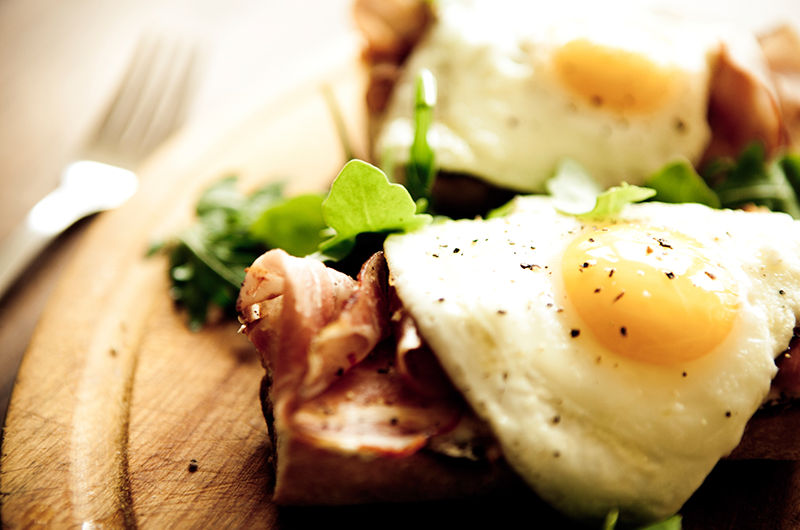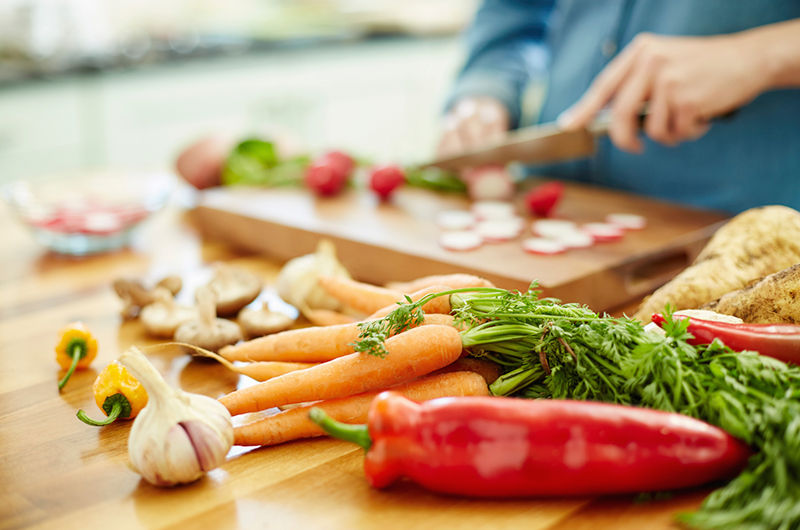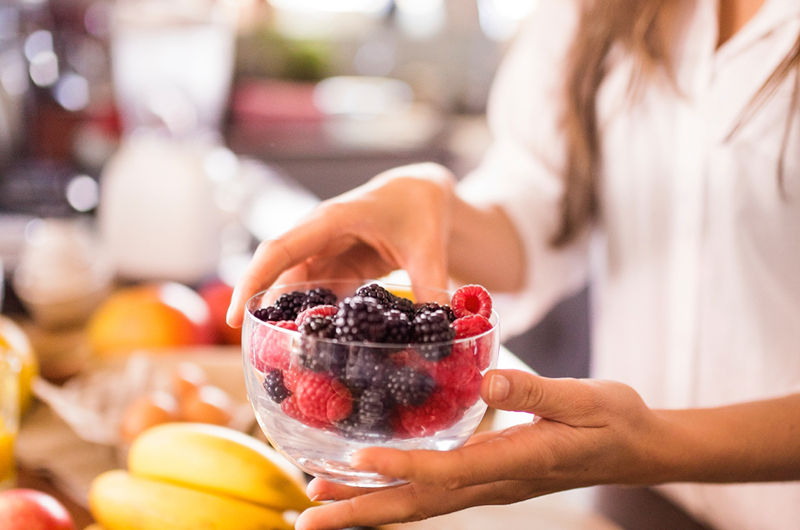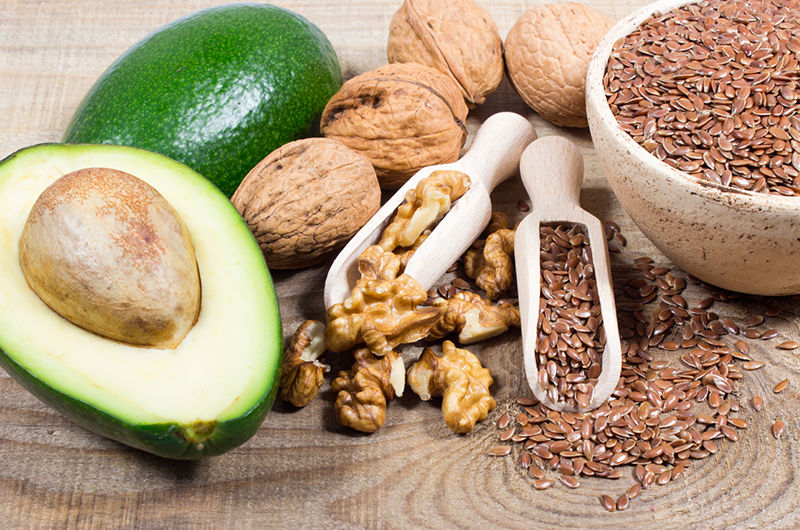You know the drill: To lose weight you have to burn off more calories than you take in. In a perfect world, with no job, kids or stress, that would probably work. But unless you’re able to employ a chef and a personal trainer and have no responsibilities other than to eat what you’re given and move as you’re told, it’s probably not going to happen. Besides, to see real and lasting change in your weight, you’re going to have to do the work—yourself. To make this process easier, here are 16 of our best diet tips to help you lose weight and maintain the weight loss, forever.
1. Eat breakfast.

Many consider breakfast to be the most important meal of the day because it breaks your overnight fast (which may have lasted up to 12 hours) and jump-starts your metabolism for the day. Make sure your breakfast is high in both protein (20 to 30 grams is ideal) and fiber, as these nutrients take longer to digest and keep you fuller for longer.
2. Eat a balanced plate with all three macros.
Carbohydrates, protein and fat are important to have at all meals. Carbs act as your primary fuel source, while protein keeps your blood sugar level and energy steady for longer periods of time. Fat acts as a fuel source, helps with satiety and gives a luscious mouth-feel, which adds to satisfaction with your meal.
3. Eat a mostly plant-based diet, primarily vegetables.

Foods that come from plants include fruits, vegetables, whole grains, beans, legumes, nuts and seeds. All of these foods are high in fiber and antioxidants, which help decrease inflammation in the body as well as reduce risk for obesity, diabetes, heart disease and certain forms of cancer. Filling 75 percent of your plate with plants is a sure-fire way to meet your needs for fiber. Choosing mostly vegetables is a bonus strategy, as most vegetables are low in calories, so you can eat more volume for fewer calories.
4. Drink water.
Staying properly hydrated is vital to feeling full and having good energy. You can drink water hot or cold, and squeeze some lemon, lime or orange juice into your water for some flavor. Green tea is also a good option for hydration and contains the thermogenic phtyochemical EGCG. We recommend that you consume at least 2 to 3 liters of water a day. The best indicator of hydration status is your urine color. If it’s clear or light yellow, you are properly hydrated.
5. Control your portion sizes.

Most people get tripped up by not monitoring portion sizes, even of “clean” foods, as they feel that these foods are healthy and can be eaten in unlimited quantities. However, all foods have calories, even healthy foods. Portioning out foods at meals, especially of grains, protein and fats (which have the highest calories per ounce) will make it easier for you to meet your total calorie goals for the day,
6. Eat before you are starving and stop when you are content, not stuffed.
Too often, people don’t eat until they are starving and end up eating more food than they should to satisfy their hunger. By the time they are finished eating, they feel uncomfortably stuffed. Being in touch with hunger and fullness signals is key to controlling the pace of your eating, as well as being able to stop eating as soon as you feel about 80 percent full. In the 10 minutes following a meal, you will continue to feel even fuller.
7. Don’t skip meals.
When you skip meals, your blood sugar and energy levels drop, which signals your body that it needs to eat immediately. Of course, the message that your brain is sending out is to fill your body with quick-acting carbs, such as sugar, soda, cookies, chips and the like, as these foods are known to quickly raise blood sugar and energy levels. When you eat regularly spaced meals, your body knows that food (energy) is coming at regular intervals and, in turn, will burn those calories for energy. When meal times are unpredictable, your body will more likely save a bulk of those calories as body fat due to a defense mechanism protecting you from famine.
8. Add superfoods to your diet.

Superfoods include chia seeds, ground flax seeds, matcha, kefir, virgin coconut oil, turmeric, cinnamon and cacao. What do these have in common? They are all full of anti-inflammatory properties, such as antioxidants, phytochemicals, probiotics and omega-3 rich fats. Add these foods to your smoothies, oatmeal and stir-fry dishes.
9. Avoid foods that cause inflammation.
Inflammation is now believed to be at the root cause of many diseases, including being overweight or obese. To address inflammation, we first need to remove the pro-inflammatory foods, which include sugar, processed and refined foods, and trans fats.
10. Eat anti-inflammatory foods.

Replace pro-inflammatory foods with fruits, vegetables, whole grains, beans, legumes, nuts, seeds and omega-3 fats, all of which are known to have anti-inflammatory effects in the body.
11. Sit down to eat.
Taking the time to stop what you are doing and sit down to eat, and really focusing on the meal—the taste, aroma, texture, temperature—allows you to appreciate and enjoy your meal more than if you were distracted. Plus, you’ll be clued in to your body’s signal that it’s full and stop eating when your body wants to, not because the food is gone.
12. Practice mindful eating.
When you eat while scrolling through emails, checking your Twitter feed, watching TV or surfing the net, you’re tuned out from your meal. Eating while distracted leads to more calories being consumed and less satisfaction with the meal. Turn off the devices for 20 minutes and tune into your meal instead.
13. Ask yourself WHY you’re eating.

It’s quite common that we eat for reasons other than physical hunger. Sadness, anger, frustration, boredom and fear are just a few of the emotions you might be covering up with a snack, especially when you’re not really hungry. The next time you find yourself in the kitchen, ask yourself, “What am I really feeling?” Finding non-food coping mechanisms, such as journaling, drawing, listening to music, calling a friend or taking a walk, is a better strategy for sorting through your emotional hunger.
14. Don’t “save” your calories for later in the day or evening.
A common tactic for losing weight is skipping breakfast because it’s an easy way to cut calories. Unfortunately, that usually ends up leading to a pretty big lunch and/or dinner because your body is sending out signals that say, “I’m starving!” When you eat during the times of day when you are most active (typically during the day), you will naturally eat less in the evening.
15. Replace the bread (or chip) basket with some veggies.
Most restaurants are pretty easygoing about giving you a plate of veggies and salsa or guacamole to munch on instead of a basket of bread or chips while you are waiting for your meal to arrive. Just ask.
16. Sharing is caring.

Enjoying a meal at a restaurant can spell diet disaster, as the average entrée weighs in at 1,000 calories or more. Much of this is due to portion sizes being larger than recommended. The solution: Split an entrée, order menu items a la carte, or choose two smaller appetizers instead of an entrée. Also, limit or avoid alcoholic beverages, as these decrease inhibition and increase appetite.
Losing weight requires you to change your current eating pattern and habits. Try out a few of these tips each week and practice them every day. After a while, they will become your new habit and you’ll likely begin to see a noticeable difference in your weight.




 by
by 





 by
by